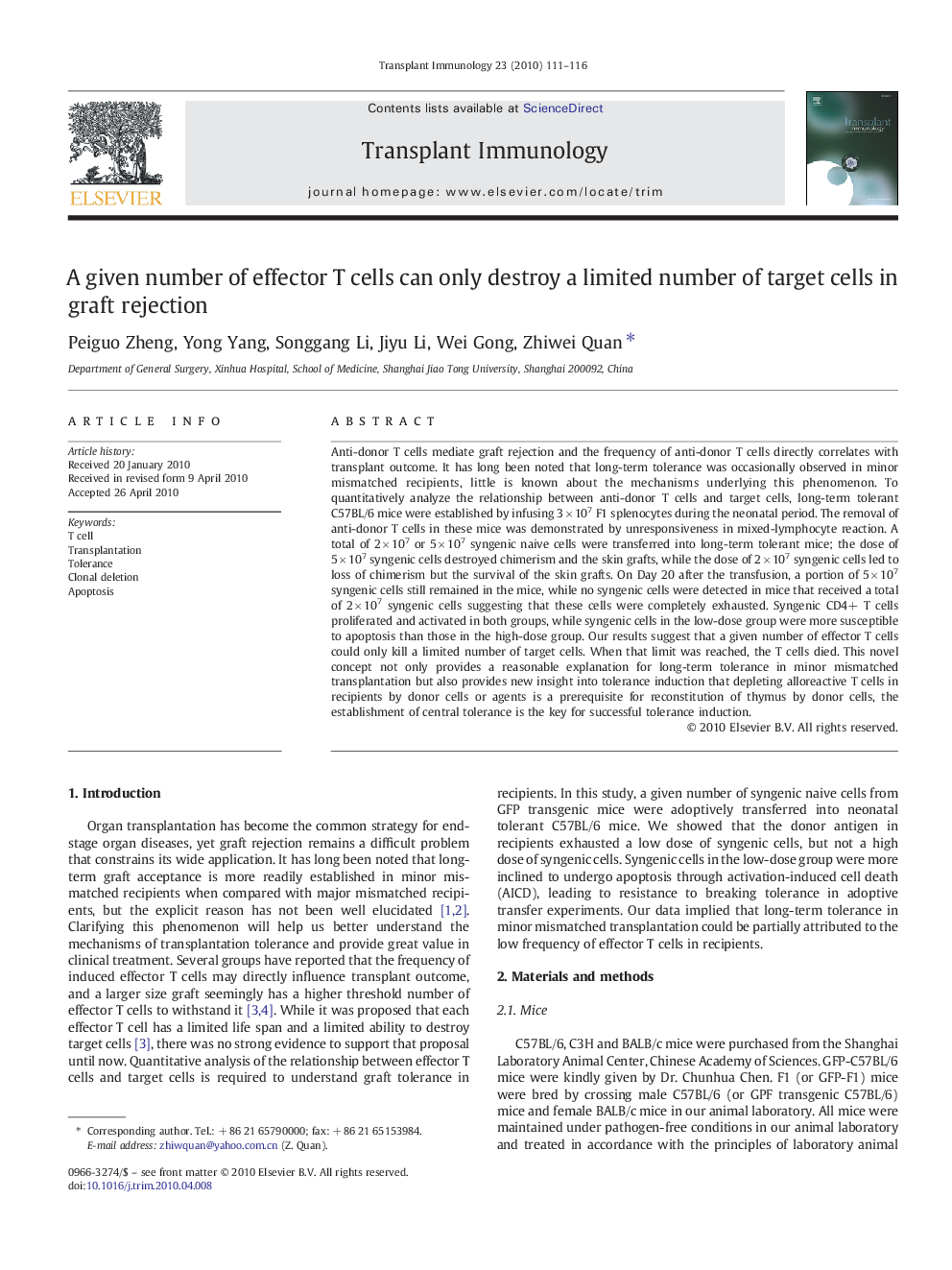| Article ID | Journal | Published Year | Pages | File Type |
|---|---|---|---|---|
| 3392315 | Transplant Immunology | 2010 | 6 Pages |
Anti-donor T cells mediate graft rejection and the frequency of anti-donor T cells directly correlates with transplant outcome. It has long been noted that long-term tolerance was occasionally observed in minor mismatched recipients, little is known about the mechanisms underlying this phenomenon. To quantitatively analyze the relationship between anti-donor T cells and target cells, long-term tolerant C57BL/6 mice were established by infusing 3 × 107 F1 splenocytes during the neonatal period. The removal of anti-donor T cells in these mice was demonstrated by unresponsiveness in mixed-lymphocyte reaction. A total of 2 × 107 or 5 × 107 syngenic naive cells were transferred into long-term tolerant mice; the dose of 5 × 107 syngenic cells destroyed chimerism and the skin grafts, while the dose of 2 × 107 syngenic cells led to loss of chimerism but the survival of the skin grafts. On Day 20 after the transfusion, a portion of 5 × 107 syngenic cells still remained in the mice, while no syngenic cells were detected in mice that received a total of 2 × 107 syngenic cells suggesting that these cells were completely exhausted. Syngenic CD4+ T cells proliferated and activated in both groups, while syngenic cells in the low-dose group were more susceptible to apoptosis than those in the high-dose group. Our results suggest that a given number of effector T cells could only kill a limited number of target cells. When that limit was reached, the T cells died. This novel concept not only provides a reasonable explanation for long-term tolerance in minor mismatched transplantation but also provides new insight into tolerance induction that depleting alloreactive T cells in recipients by donor cells or agents is a prerequisite for reconstitution of thymus by donor cells, the establishment of central tolerance is the key for successful tolerance induction.
